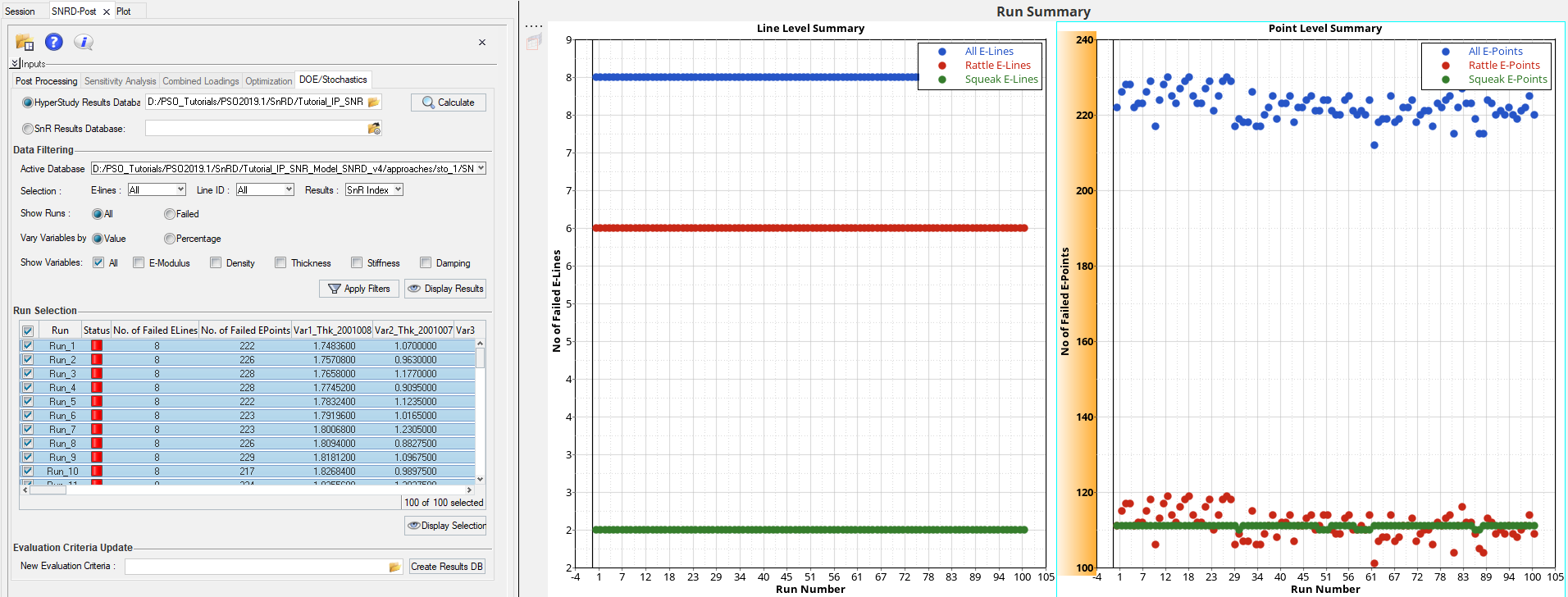Variabilities Analysis
SnRD Post Stochastics and DOE module can be used to investigate hundreds of simulation results in a powerful way.
When multiple variational studies have been setup and results have been imported, SnRD will automatically post process all the squeak and rattle results for high level and deep dive investigation.
Effect of Variation on Squeak and Rattle Performance
When a material property or a fixation stiffness is identified to vary due to the manufacturing or the assembly process, it is important to understand the consequences on squeak and rattle performance.
By selecting one of multiples parameters, you can quickly identify the range of response variation in the form of:
- Relative displacement maximums and minimums.
- SnRD index ranking of all interfaces to see if failure is to occur. Failure in this case mean rattle and or squeak occurrence.
- Range of variations of selected parameter(s) that allow a risk zone free for squeak and rattle occurrence and generate important input to the project quality process.
The information above can be extracted, illustrated, and used in the diagnosis process as well as in the communication of the results.

Aging Effect on S&R Performance
A parameter variation, such as the fixation stiffness (PBUSH Ki values), can be representative of a loss of pre-tension between attached parts. This is one of the common root causes for squeak and rattle in assemblies, especially with time and use.
Using the Stochastic/DOE capabilities allows the engineering team to understand the limits of the design choice implemented as well as the break point. SnRD analyst can show beyond which loss of stiffness problems will appear, where and how critical they are.
This diagnosis process enables the project team to choose the right fixation and give better specification to their suppliers. Thus, anticipation of failure, rattle and/or squeak, can be detected and robust engineering solution implemented instead of post-production palliative measures.
Tendencies and Optimum
Squeak and rattle issues are often related to local stiffness issues rather than global stiffness. This means that solution implementation is often different from the NVH classical approach: stiffer is better.
When using Design of Experiment, you can explore optimums around which the relative displacement responses are the lowest. Typically, engineering is trying to reduce weight and cost, so finding alternative combination where a softer material can be used while improving or keeping the performance is highly appreciated by the buyers.
In the Figure 2, you can see relative displacement is at its lower point when the Young Modulus of the lower cover (orange part) is at the minimum value.
- Nominal material value causes performance issues.
- Softer material is cheaper and perform better.
- Aging, meaning loss of stiffness, will not affect the performance.
- In a cockpit module, driver lower cover is one of the key parts for occupant safety knee forces & occupant kinematics. Softer energy absorbing material can help Crash performance.
